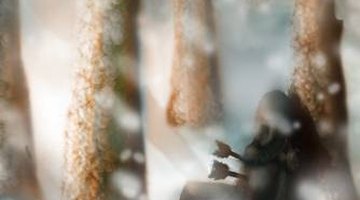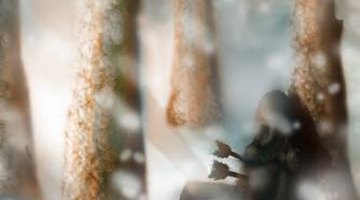How to Paint Light Effects
One of the best things about painting is that you can capture the play of light in frozen moments that sometimes go ignored. Painting light can be a tremendous joy to an artist and adds incredible depth and a touch of realism to any painting.

Things You Will Need
- Paint
- Canvas
- Paintbrushes
Mastering how to paint the effects of light on objects can turn a regular illustration into a beautiful work of art. Creating these effects is not as difficult as it might seem. Your artwork will be all the better for it in the long run.
-
Decide on the direction for your light source. In this example, the sun will be setting so the direction of the main light source, the sun will be in the direction of the upper-left corner of the canvas.
-
Pain the basic light and dark hues. Since you know the direction of your light source, add darker hues to the sides of objects farther away from the light source; for example, the trees in the painting above should have darker right sides and slightly lighter left sides. The same is true of figures; however, consider each part of the figure for light and dark hues. The head, arms, torso and legs should each be considered separate object for the purpose of lighting the figure.
-
Paint in shadows using darker hues. Thin your paint if you are using acrylic by mixing one brush-load of dark blue with two brush-loads of water. If you are using oil, mix the same ratio of paint, but use paint thinner to dilute the mixture. This will allow you to paint over the existing painting and add shadows without disturbing the shape of the lines you have already painted.
-
Base the hues for your shadows on the surrounding colors in your painting. For instance, if you are painting a grassy field, use dark green for shadows. If you are painting snow, use blue hues to create shadows. The shadows should follow the line of the light source. Place a ruler on your painting running from the light source across the base of the object to figure out where to place the shadow.
-
Place the shadows diagonally or almost horizontally if the sun or light source is low to the horizon. Add shadows and hints of blue to the background of the painting by to create "atmospheric perspective." This will add realism and depth to your painting.
-
Paint the highlights of the light source or sunlight on the side of the objects closest to the light source. For example, if the sun is coming from the upper left, place highlights of orange on the left side of each object. The later in the day, the more orange to red the sunlight will appear. Mix the colors the same way as you did with the shadows so that you can paint over your existing work without damaging your painting. Add extra highlights to anything shiny, such as liquids or metals, by adding a thin line of white or bright yellow directly where the light source is striking the material.



Tip
Take snapshots of nature during different times of day. Note the shadows and hues created by light.
Warning
Be sure to keep your paint for shadows and sunlight thin so you don't smear paint over existing work.
Resources
Tips
- Take snapshots of nature during different times of day. Note the shadows and hues created by light.
Warnings
- Be sure to keep your paint for shadows and sunlight thin so you don't smear paint over existing work.
Writer Bio
Andrew DeWitt is a freelance writer/illustrator and stand-up comic with more than eight years of professional experience. He has written for Chicago Public Radio, Vocalo Radio, Second City Chicago, and The Lemming. DeWitt has a liberal arts degree with a double major in theater and creative writing.
Photo Credits
- Paintings by Andrew DeWitt
- Paintings by Andrew DeWitt
More Articles



